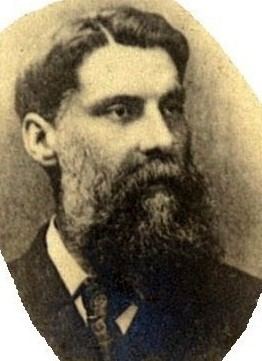Occupation Architect | Name Brightwen Binyon | |
 | ||
Died September 21, 1905, Bushey, United Kingdom | ||
Brightwen Binyon, FRIBA, (30 May 1846 – 21 September 1905) was a Manchester-born English architect.
Contents
Life
He was born at Headley Grange, Victoria Park, Manchester, the son of Edward Binyon (1791–1855), a sugar refiner and tea dealer, and his wife Jane née Brightwen (1805–1890).
He was educated at a Friends School (formerly Stramongate School) in Kendal. Before training as an architect under Alfred Waterhouse between 1863 and 1871. Later he gained membership of the RIBA. He then travelled around the continent after which he came to Ipswich. He lived with his mother at 43 Fonnereau Road, Ipswich in 1874. On 18 September 1879 in Darlington, he married Rachel Mary Cudworth (1853–1949) of Darlington. She was the daughter of William Cudworth and Mary Thompson. They then lived at 5 Henley Road, Ipswich with Brightwen having an architect’s office at 36 Princes Street, Ipswich. Henry Percy Adams was later articled to him. He had many commissions in Suffolk including the Corn Exchange, Ipswich the Board School in Bramford Road, Ipswich and the Concert Pavilion, Felixstowe. In 1882, Ipswich council held a design competition for the Corn Exchange. Out of 15 entries to the council, he won using the nom-de-plume "North Light". In 1890, Sunderland, County Durham held an architectural design competition for a town hall on Fawcett Street. This competition was judged by Alfred Waterhouse and was won by Brightwen Binyon. He beat Frank Caws (another renowned local architect). The competition was dogged by accusations of corruption due to the link between Binyon and Waterhouse. In 1892, he won another design competition, beating 44 other designs for the Barrett Browning Institute in Ledbury, Hertfordshire. The design was based on the timber-framed Market House, which was opposite the site. It was completed in 1896. Nikolaus Pevsner was, however, not impressed by its style. In 1897, he was the winner of design of the Felixstowe Spa and Winter Garden. But the design was not implemented.
He became a member of Ipswich Fine Art Club (during 1875–1903) and an exhibitor during 1881–85. He also exhibited at the Royal Academy between 1887 and 1895. In about 1892, the family moved to 'The Cedars', Anglesea Road, Ipswich and, after being in practice for over 25 years, he retired in 1897. He died in Bushey, Hertfordshire on 21 September 1905.
Brightwen and Rachel had four children including Major Basil Binyon (1885–1947, a well-known electrical engineer (also Director of BBC in 1922)), Mary Sims Binyon (1882–1976, an artist and modeller) Olive Binyon (1888–1971) and Janet Binyon (1880–1963). His grandson was the conservation architect Sir Bernard Feilden(1919–2008).
Brightwen Binyon was the 2nd cousin once removed of poet Robert Lawrence Binyon who wrote the poem 'For the Fallen' .
